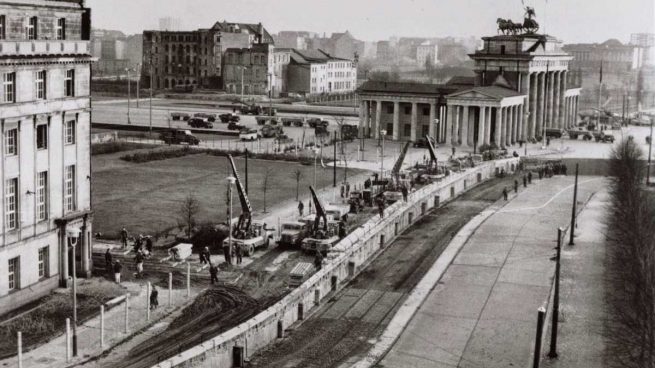After World War II, Germany was divided among the winners of the contest. Berlin was the city with the largest division being occupied by 4 countries: the Soviet Union United States, France, and England. However, it was the difference in political positions that led Germany to suffer from a great polarization. On the one hand, the communist ideals of the Soviet Union and, on the other hand, the three western sectors that shaped the free market economy and capitalism.
In 1949, this great ideological division was planned on the ground, becoming the German Federal Republic (RFA), that is, the North American, French and English sectors; and, on the other, the German Democratic Republic (GDR) occupied by the Soviet Union.
The wall

After the division, Berlin had been further divided into 81 waypoints so as not to cut off the relations between one side and the other. In this way, the businesses of both parties could be supplied. However, by 1961, almost 3 million people left the Soviet side after their deplorable economy and decided to leave for the buoyant economy of West Berlin
Considering this as an offense, the GDR realized the decline in its population and on the night of August 12 of the same year, it raised what would be a provisional wall that blocked 69 of the 81 existing access points.
In the morning, GDR officers placed wires around it blocking the way to the means of transportation. Subsequently, the brick wall that was constantly modified was erected to prevent the escape of those left on the Soviet side.
In its last reform, the wall was a concrete wall formed by steel cables inside and a hemispherical surface that prevented any possibility of clinging. This great wall of 3.5 and 4 meters high that extended over 43 kilometers, was succeeded by a «strip of death» that had wires, extreme vigilance, trained dog keepers for the attack, military vehicles, in addition to watchtowers, among other methods to prevent leaks.
Figures
From the construction of the Wall in 1961 until its fall in 1989, more than 5000 people tried to cross for their freedoms. More than 100 had died in the attempt and another 3000 were arrested. Many stories, including the one that the singer Nino Bravo (Free) portrays in his song, are told in the Checkpoint Charlie Wall Museum, which was one of the many points where officers used to stop many who tried to cross with false documentation.
The fall
Many may be the factors that motivated the Fall of the Berlin Wall. However, the opening of the borders between Austria and Hungary in May 1989 was a great trigger. In this way, many Germans were able to travel to Hungary to request asylum at the RFA embassies. This fact led to large mobilizations in Alexanderplatz that led the GDR to affirm that the westward passage could take place.
/arc-anglerfish-arc2-prod-infobae.s3.amazonaws.com/public/LLGB6PBK7FAI5COJTHEOV4FUQA.jpg)
This statement was due to the question of the journalist Ricardo Ehrman who, in an interview with Günter Schabowski, made it possible for the GDR spokesperson to admit that from that very moment citizens could travel without a passport to any destination. Replicated by other journalists, Ehrman asked again since when this rule, which was a mere draft so far, was effective. To this, the spokesman said it had immediate effect. Soon everyone wondered if this rule was viable in the face of trips to West Berlin and this confirmed it doubtfully.
/arc-anglerfish-arc2-prod-infobae.s3.amazonaws.com/public/5JWIABMM7RGYNIITJUWYMJGN2U.jpg)
At that moment, hundreds of people decided to cross the border although the officers who guarded them had no knowledge of it. People used to shout «They’ve said it on TV.» Therefore, far from firing, it was only left to let the masses move freely. Finally, other media such as radio began to replicate the news. On November 9, 1989, the Berlin Wall had fallen.